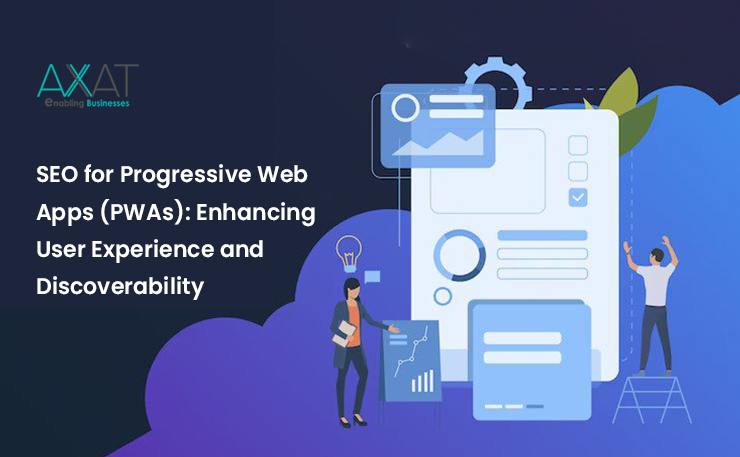A Progressive Web App (PWA) is a web application that leverages modern web technologies to provide a user experience similar to native mobile apps. PWAs are designed to work across different devices and platforms and can be accessed through web browsers. They offer features such as offline functionality, push notifications, and the ability to install the app on the user's home screen, blurring the line between web and native app experiences.
1) What are the main PWA benefits?
a.Improved User Experience: PWAs provide a fast and responsive user experience, similar to native apps. They load quickly, respond instantly to user interactions, and provide smooth animations and transitions.
b.Offline Functionality: PWAs can work offline or with a poor internet connection. They can cache and store essential resources, allowing users to access content even when offline.
c.App-Like Features: PWAs can utilize features such as push notifications, background sync, and device hardware access, providing functionalities similar to native apps.
d.Cross-Platform Compatibility: PWAs are built with web technologies like HTML, CSS, and JavaScript, making them compatible with different platforms and devices. They eliminate the need for developing separate apps for various operating systems.
e.Discoverability: PWAs are discoverable through search engines, making it easier for users to find and access the app through organic search results.
2) What are PWAs SEO Best Practices?
a.Ensure Mobile Responsiveness: PWAs should be optimized for mobile devices, as search engines prioritize mobile-friendly websites. Use responsive design techniques to ensure a consistent and user-friendly experience across different screen sizes.
b.Optimize Page Speed: Page loading speed is crucial for both user experience and SEO. Optimize your PWA's performance by compressing images, minifying code, leveraging browser caching, and reducing unnecessary redirects.
c.Use Descriptive URLs: Implement keyword-rich and descriptive URLs for each page of your PWA. This helps search engines understand the context and relevance of your app's content.
d.Optimize Metadata: Craft compelling titles and meta descriptions for your PWA's pages. These snippets appear in search engine results and can significantly impact click-through rates.
e.Provide High-Quality Content: Create valuable, relevant, and engaging content within your PWA. Incorporate target keywords naturally into your content, headings, and image alt tags to improve search engine visibility.
f.Implement Schema Markup: Use structured data markup, such as Schema.org, to provide additional context to search engines about the content of your PWA. This can help search engines understand and display your app's information more effectively.
g.Build High-Quality Backlinks: Acquire backlinks from reputable and relevant websites to improve your PWA's authority and visibility in search engine rankings. Focus on building quality links rather than quantity.
3) How to Validate PWAs Configuration and Optimization?
To validate the configuration and optimization of your PWA, you can follow these steps:
a.Lighthouse Audit: Use the Lighthouse tool, available in the Chrome Developer Tools, to assess your PWA's performance, accessibility, SEO, and best practices. It provides a comprehensive report highlighting areas for improvement.
b.Test on Different Devices: Ensure your PWA works well across various devices, including smartphones, tablets, and different browsers. Test the functionality, responsiveness, and performance to identify any issues that need to be addressed.
c.Analyze Performance Metrics: Monitor and analyze performance metrics such as page loading speed, time to interactive, and other key indicators using tools like Google PageSpeed Insights, WebPageTest, or GTmetrix. Identify areas for optimization and make necessary adjustments.
d.Check Cross-Browser Compatibility: Test your PWA on different browsers, including Chrome, Firefox, Safari, and Edge, to ensure consistent performance and functionality. Pay attention to any browser-specific issues and address them accordingly.
e.Validate Progressive Enhancement: Ensure that your PWA gracefully degrades on older browsers or devices that may not support all the advanced features. Test on devices with limited capabilities to confirm that the core functionality is still accessible and usable.
f.Verify Metadata and Structured Data: Review the metadata, including title tags and meta descriptions, to ensure they are accurate and optimized. Validate the implementation of structured data markup using the Structured Data Testing Tool provided by Google.
g.Conduct Usability Testing: Gather feedback from users to evaluate the overall user experience of your PWA. Conduct usability tests to identify any pain points, navigation issues, or areas for improvement.
4) How to Enable PWA Features on Your Site?
To enable PWA features on your website, you need to follow these steps:
a.Ensure HTTPS: PWAs require a secure HTTPS connection to be installed and accessed. Ensure that your website is served over HTTPS to enable PWA functionality.
b.Create a Web App Manifest: A web app manifest is a JSON file that defines how your PWA should behave when installed. It includes information such as the app's name, icons, colors, and display mode. Create a manifest file and link it in the HTML head section of your web pages.
c.Implement Service Workers: Service workers are JavaScript files that enable offline functionality and background synchronization in PWAs. Implement service workers to cache essential resources and provide a seamless experience, even when the user is offline.
d.Add an Installable Prompt: Prompt users to install your PWA on their device's home screen. Use the beforeinstallprompt event to display an install banner or custom prompt, allowing users to add your PWA with a single click.
e.Configure Push Notifications: To enable push notifications, you need to set up a push notification service and integrate it into your PWA. Implement the necessary JavaScript code and register service workers to handle push notifications.
Remember to regularly check for updates and stay informed about the evolving landscape of PWAs and their optimization techniques.
